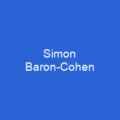Autism Spectrum Disorder: A Journey Through the Neurodiversity Landscape
Imagine a world where every individual’s unique traits are celebrated rather than labeled as deficits. Autism spectrum disorder (ASD) is one such journey, a complex and multifaceted neurodevelopmental condition that affects millions of people worldwide. It’s not just about diagnosis; it’s about understanding the rich tapestry of experiences that come with being on the autism spectrum.
The Spectrum of Understanding
Autism is often described as a spectrum, which means that its manifestations can vary widely from person to person. This diversity challenges traditional notions of normalcy and highlights the importance of recognizing each individual’s unique strengths and needs. The DSM-5 and ICD-11 have adopted a more inclusive approach, acknowledging the vast range of behaviors and abilities within the autism spectrum.
Genetics and Environment: A Complex Interplay
The precise causes of ASD remain elusive, but research points to both genetic and environmental factors. The CHD8 gene, for instance, has been linked to a small percentage of cases, shedding light on the intricate biological mechanisms at play. However, most individuals with autism do not have identifiable genetic mutations, suggesting that environmental influences also contribute significantly.
Challenges and Strengths
Autistic people often face unique challenges in social interactions and sensory processing. Yet, they also possess extraordinary talents and perspectives that can enrich our society. The neurodiversity movement advocates for viewing autism as a natural variation rather than a disorder to be cured. This perspective emphasizes the importance of acceptance and inclusion.
Diagnosis and Support
The diagnostic criteria for ASD have evolved over time, reflecting a deeper understanding of the condition. Early diagnosis can lead to better outcomes, but it’s crucial to approach this with sensitivity and respect for individual differences. Interventions such as applied behavior analysis (ABA) and speech therapy can help individuals develop essential skills, while educational programs aim to foster independence and social competence.
Controversies and Debates
The use of ABA has sparked significant debate within the autism community. While it can be effective for some, critics argue that it may prioritize normalization over individual needs and preferences. The autism rights movement advocates for a more inclusive approach that values diversity and self-determination.
Living with Autism
The experiences of autistic individuals are as varied as the spectrum itself. Many find solace in communities that celebrate their unique traits, while others face significant challenges in daily life. The prevalence of autism has been on the rise, prompting a reevaluation of diagnostic criteria and societal attitudes.
Supporting Families
Families caring for autistic children often navigate complex emotional and financial landscapes. Support networks, including therapy and educational resources, can make a significant difference in their journey. Siblings of autistic individuals also experience unique dynamics, with both admiration and challenges as they grow into adulthood.
Conclusion: Embracing Neurodiversity
In the end, autism spectrum disorder is not just about diagnosis; it’s about recognizing the incredible diversity within our human experiences. By embracing neurodiversity, we can create a more inclusive and understanding world where every individual has the opportunity to thrive.

You want to know more about Autism?
This page is based on the article Autism published in Wikipedia (retrieved on January 26, 2025) and was automatically summarized using artificial intelligence.






